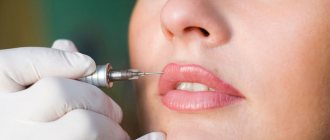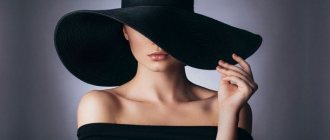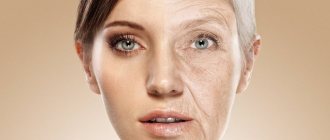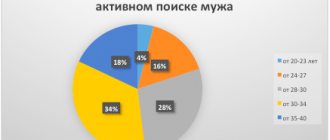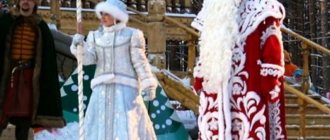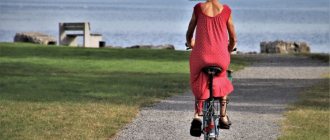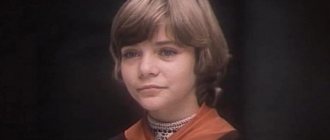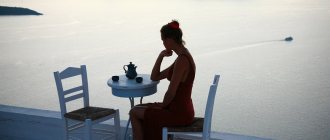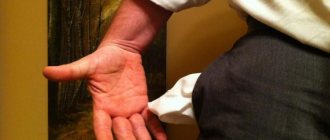Have you noticed that as soon as you go into a cafe or a store abroad, they immediately run up to you with the words “Russians?” It’s even a little offensive that our people are so easily identified. It seems that our compatriots have already learned how to dress - women without stilettos, men without purses, and they try to smile. But what gives us away abroad? Facial features? His expression? This is what we tried to find out.
Here, for example, is what users of the popular website Thequestion write:
- This is not the structure of the face, but the behavior of the face - facial expressions, expression. My option is a smile. Our compatriots smile with closed lips, but theirs smile with open ones, so that sometimes even the gum is visible. But this is my opinion, it is not scientific, because there is no way to distinguish us by facial structure. And a Russian person who has lived 20 years in America will have the same facial expressions as an American. The same as if an American lives with us for a long time. Plus, there is great and powerful individual variability, which covers everything in the world (Stanislav Drobyshevsky, anthropologist, candidate of biological sciences).
— According to my observations, in Western Europe and the USA people have sharper and sharper facial features, and they often age in a finely wrinkled manner. In Russia, people have softer faces, and people often age according to the deformation type.
— There are several images/studies on the Internet on “averaging” human faces. This one, for example, shows only Europeans: You can immediately see that the Eastern European face is wider, the forehead is lower, and the nose is slightly smaller. Many people in the photo have smaller eyes than Western/Southern people. According to my own observations, Russians are easy to distinguish from other tourists by their clothes: older women wear long sundresses with flowers and a lot of makeup, men like shorts, and tourists in Scandinavia often dress too warmly.

— I answer as a bar worker in the center of St. Petersburg. It just so happens that 50% of my visitors are Finnish, English, American, German and French. I deliberately do not take into account people of Asian appearance. When a guest has just stepped outside the threshold of our establishment, with 85% probability it is already possible to say where he is from. Your gait says a lot. Russians usually have wider shoulders, but their posture is slouched. For foreigners it’s the opposite. The posture is straight, regardless of age or whether you have a briefcase behind your back. I won’t speak for everyone, this is a purely personal opinion. Secondly, it is a smile and behavior. Foreigners are very confident when they walk into a bar, the first thing they notice is, drum roll, the bar! They know why they came, and they don’t care which sofa they fit their butts on. Unlike the Russians.
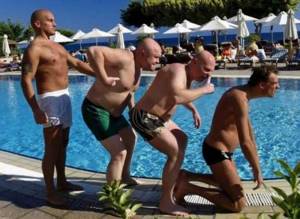
The greeting decides a lot. Foreigners say hello too happily. It seems that they are my regulars and we have been family friends for a long time. Sometimes there are even too many smiles. And appearance plays a lot. I don’t want to say that you and I are less tidy, but... Although not. That's exactly what I'll say. Hairstyle, clothes, details. Everything looks harmonious and evokes pleasant emotions. The skin decides a lot. Yes. Exactly the skin. Shade and color. I'm not talking about ethnic differences now, but about skin health. Everyone knows that foreign pensioners look much better than ours. Especially when it comes to teeth. Finally, we get to facial expressions. Millimeters are everything. The way he squints, the way he looks around, the way he works with his hands. No matter what anyone says, I declare that they feel freer, while the Russians feel more impudent.
— Difference in jaws and dentition. Traditionally, the American school of orthodontics tries with all its might to preserve all the patient’s teeth, even if there is not enough space in the dentition. The jaws are expanded with various functional devices so that teeth that are out of the row can be moved into the row. In Europe, it is different, the European school of orthodontics is more conservative; if there is not enough space in the dentition according to certain criteria, for the purpose of orthodontic treatment the first or second premolars are removed, and then the occlusion (bite) is corrected with the help of braces and the dentition is straightened. As a result, Americans, on average, have larger jaws and wider smiles than Europeans.
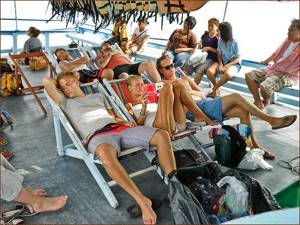
— According to my observations in Greece, it is the lack of a smile and a heavy look that give Russians away. Seeing at least one of these signs, Athenian traders in fur coats and all sorts of garbage fly towards you, as if they had the winged sandals of Hermes on their feet, and your pockets are dragging on the ground from the weight of the gold in them. Just for fun, I even conducted an experiment: a couple of days apart, I walked along one street near the Acropolis, chock-full of shops for every taste - one day with a familiar expression on my face, and on the second I smiled at all 28, very plausibly depicting relaxed openness to almost the whole world . In general, when I walked with a smile, not a single (!!!) merchant pestered me: “Girl, buy a chubu,” while on another day I was literally shaking from the number of them around me.
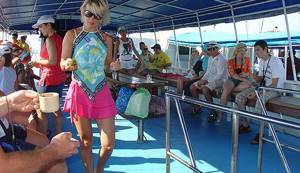
- People's EYES give them away! Sight. They look differently. How? I can't describe it. Maybe they don't look scared. They look innocent and open. Our people and I also have a more wary, or something like, concentrated look. And (again from observations) those of our compatriots who are lucky enough to become a “man of the world”, travel a lot, communicate with foreigners, begin to look somehow otherwise, and it is already more difficult to identify them in a crowd abroad as “our own.” And clothes, it seems to me, have long ceased to be an identifier. At least those who live in Moscow or St. Petersburg do not stand out for the most part in their choice of clothing from Europeans.
Features of Russian women that have always surprised foreigners
Foreigners consider Russian women to be perhaps the most beautiful in the world, but at the same time the most mysterious. Many features of Russian women are difficult for Europeans to understand; they simply cannot explain them to themselves from the point of view of common sense.
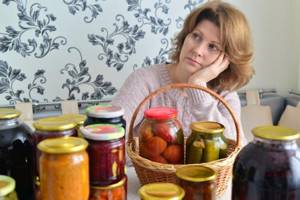
For example, how is it possible, having a certain financial income, to grow vegetables on a country plot, and then also to preserve them, closing them in jars and preparing them for the winter? Or how can you waste time on the labor-intensive process of preparing several dishes, instead of stopping by the nearest cafe or, at worst, simply removing the film from a ready-made lunch bought in a supermarket and putting it in the microwave?
And the ability to collect mushrooms, berries and other gifts of nature in the forest, and demonstrate culinary skills in preparing them, even more shocks foreigners.
The modern rhythm of life has led to the fact that in the West, young women having children are a relatively rare phenomenon. There, young people strive to get an education, achieve some success in their professional activities, stand firmly on their feet, and only after 30-35 years old begin to think about starting a family. In Russia, by this age, women often already have two children, which in many cases does not interfere with their career.
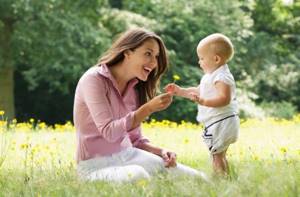
There is no need to talk about the fanaticism of Russian mothers who consider their children the best, the most capable, the most beautiful. Unlike European women, they try to develop their babies from the cradle and believe that everyone around them should share their delight at the first tooth that falls out, the first word spoken or the first steps taken, and they are seriously offended if this does not happen.
Russian grandmothers are a separate issue. Unlike their European friends, who, upon retirement, devote their lives to travel, hobbies and new interests, Russian grandmothers are looking forward to the arrival of their grandchildren in order to devote their lives entirely to them.

Russian women also have more serious disadvantages. Some of them are quite difficult for Europeans to get used to. For example, free use of time. The habit of always and everywhere being late is sometimes even elevated to the rank of the norm, for example, by the statement that it is not customary for a woman to arrive on time on a date. If a Russian woman says that she will be ready in five minutes, by this time you can safely add several more times the same amount.
But looking “at your best” anywhere and at any time is also a feature of Russian women. Foreign women will rarely put on makeup to go to the nearest supermarket or take the dog for a walk, but for a Russian woman this is a common thing.
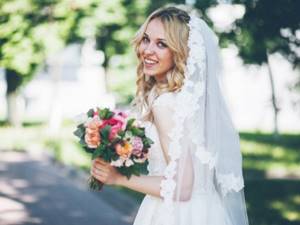
And, of course, the main difference between Russian women is that each of them has dreamed of a white dress and veil since childhood, and in any protracted relationship, she immediately strives to legitimize them in order to make her dreams come true.
Comment
Tell me, what do you think about this?
Examples of high and medium contrast
Hair - 5, skin - 9, eyes - 4
Hair - 0, skin - 9, eyes - 8
Why is contrast so important? The answer to this question is better seen than heard. Look at the same picture in different frames
On a bright background, the delicate colors faded, but the light background allowed them to reveal themselves in all their glory. The same thing happens with clothes/makeup: bright colors with low or medium contrast and you risk going unnoticed against the background of your outfit or makeup; and pastel colors with high contrast can turn you from a fatal beauty into a simpleton.
Knowing your contrast, you will learn to emphasize your natural beauty, rather than dull it.
Dark/light
The second parameter is very simple and understandable; we won’t dwell on it for long, since everything is already clear here - dark/light.
Warm/cold
But let’s look at the third one in more detail.
Red or golden hair tones, yellow or beige skin tones, and brown freckles indicate warmth.
Brown or ashy hair, porcelain or olive skin, gray freckles are signs of a cold type.
Another way to determine “temperature” is to look at the color of the veins on your wrist: if they are blue, then the skin tone is cool, and if they are green (blue veins + yellow skin tone = green), then the skin has a warm undertone. If you can't determine the color of your veins with certainty, you probably have neutral skin undertones. Let’s stop here so as not to get completely confused; this information is more than enough to accurately determine your color type.
Have you decided? Let's act!
If you know the color of your appearance, then choosing clothes or decorative cosmetics in the ideal colors for you is much easier. By highlighting your natural colors, you will create an elegant, calm look.
For example, if you are contrasting, dark and cold, then the colors in clothes and makeup should be contrasting, cold, clean and bright; for a warm appearance of medium contrast, you should prefer muted (i.e. with the addition of gray) and warm shades. By choosing colors in accordance with the color type, we get a harmonious image.
But what if you want to add bright colors or somehow experiment with your appearance? After all, as you know, the forbidden fruit is sweet; we always want what we can’t. Great, choose shades that are opposite to your appearance, playing with contrast, the main thing is not to overdo it.
By the way, contrast can be changed (and sometimes it is necessary, as in the case of Marilyn Monroe) with the help of bright makeup, tanning, or a new hair color. There are many examples when, for example, a girl should not wear black (according to all the rules), but eyelash extensions, bright makeup and a bronze tan make the image very harmonious and black becomes very flattering.
And finally, I would like to say that the overall impression depends not only on color; a beautiful silhouette, shiny hair, radiant skin, good mood, sparkle in the eyes are no less important. You shouldn’t follow rules and theories in everything, this is just a hint, but not a guide to action, look for your unique style, try on and combine new colors. Even though mistakes and disappointments cannot be avoided, this is your path to success and perfection; live your color story fully.
Anthropological portrait of a Russian person.
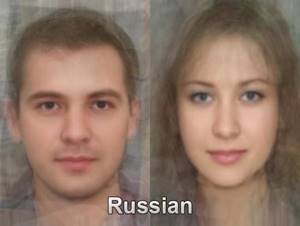
The first descriptions of the appearance of Russian people.
Herodotus in “History” writes about the Scythian farmers living on Borysthenes (Dnieper River) and Tanais (Don River): “They are generally beautiful and tall; their hair is light brown. Their look is more warlike than fierce.” The self-name of the royal Scythians is skolot (skolot, skolt... kelt).
Historian, Slavist Lubor Niederle writes: “The Scythian farmers living between the Bug and the Dnieper (Herodot, IV. 17,18, 53, 54) above the rapids and leading a completely different way of life compared to the true Scythian nomads could not be anyone other than the ancestors of the Eastern Slavs. Podolia and Volyn were Slavic already in the era of Herodotus, judging by his reports about the inhabitants of these regions, whom he calls Neupoi (Herodotus IV. 100-118) and whose Slavic origin is quite obvious.” “The territory inhabited by the Slavs before their settlement extended between the Elbe and the middle Dnieper region (with the Desna, Pripyat and Berezina). The gene pool of the nomads of the Scythian era.
During their ethnic and linguistic unity, the Slavs lived on the territory of modern eastern Poland, the southern part of Belarus (in the area of the middle reaches of the Berezina, as well as along the Sozh and Iput), in the northern part of Ukraine, Podolia, Volyn and the Kiev region with the Desna .
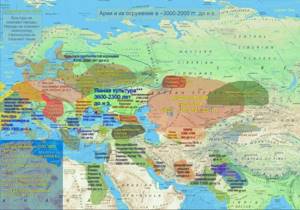
The ethnic center of the Russian people arose 4,500 years ago on the Central Russian Upland, which occupies the central part of the Russian Plain - this is the place of maximum concentration of carriers of haplogroup R1a1, which is a genetic marker of the Russian people. From here it came out and spread to the territories of Eastern Europe and Siberia.
Medieval written documents have been preserved in which Arab travelers and scientists left observations about the peoples of Rus' in their notes. The archives also contain records about Russian people, their external and behavioral characteristics. Particularly interesting are the statements of the Arab traveler 992 described the perfect body and attractive appearance of the Russians: they are “... blond, red in the face and white in body.”
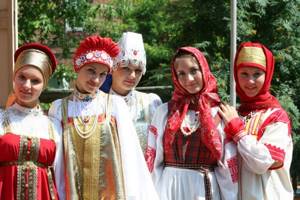
Marco Polo admired the beauty of Russians, speaking about them in his memoirs as simple-minded and very beautiful people, with blond hair and blue eyes.
The records of another traveler, Pavel Alepsky, have also been preserved. According to his impressions of the Russian family, there are more than 10 children with “white hair on their heads” who “resemble the Franks, but are more ruddy...”. Attention is paid to women - they are “beautiful in face and very pretty.”
Characteristics of Russians
In the 19th century, the famous scientist Anatoly Bogdanov created a theory about the characteristic features of a Russian person. He said that everyone quite clearly imagines the appearance of a Russian. To support his words, the scientist cited stable verbal expressions from people’s everyday life - “pure Russian beauty”, “the spitting image of a hare”, “a typical Russian face”.
The master of Russian anthropology, Vasily Deryabin, proved that in their characteristics Russians are typical Europeans. In terms of pigmentation, they are average Europeans - Russians are more likely to have light eyes and hair.
An authoritative anthropologist of his time, Viktor Bunak, in 1956-59, as part of his expedition, studied 100 groups of Great Russians . Based on the results, a description of the appearance of a typical Russian was compiled - he is light brown-haired with blue or gray eyes. Interestingly, a snub nose was recognized as not a typical feature - only 7% of Russians have it, while among Germans this figure is 25%.

Generalized anthropological portrait of a Russian person
Research conducted by scientists using various scientific methods made it possible to draw up a generalized portrait of the average Russian person. The Russian is characterized by the absence of epicanthus - the fold at the inner eye that covers the lacrimal tubercle. The list of characteristic features of Russian men includes average height, stocky build, wide chest and shoulders, massive skeleton and developed muscles.
A Russian person has a regular oval face, predominantly light shades of eyes and hair, not too thick eyebrows and stubble, and moderate facial width. In typical appearances, a horizontal profile and a bridge of the nose of medium height predominate, while the forehead is slightly sloping and not too wide, and the eyebrow is poorly developed. Russians are characterized by a nose with a straight profile (it is identified in 75% of cases). The skin is predominantly light or even white, which is partly due to the small amount of sunlight.
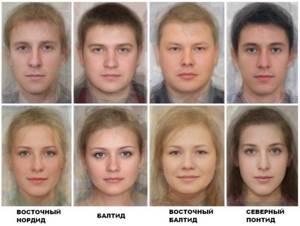
Characteristic types of appearance of Russian people
Despite a number of morphological characteristics characteristic of Russian people, scientists have proposed a narrower classification and identified several groups among Russians, each of which has distinctive external features.
The first of them is the Nordids . This type belongs to the Caucasoid type, common in Northern Europe, in northwestern Russia, and includes some Estonians and Latvians. The appearance of Nordids is characterized by blue or green eyes, an oblong skull shape, and pink skin.
The second race is the Uralids . It occupies a middle position between Caucasians and Mongoloids - this is the population of the Volga region and Western Siberia. Uralids have straight or curly dark hair. The skin has a darker shade than the Nordids, and the eye color is brown. Representatives of this type have a flat face shape.
The third type of Russians are the Baltids. They can be recognized by their medium-width faces, straight noses with thick tips, and light hair and skin.
Pontids and Gorids are also found among Russians. have straight eyebrows and narrow cheekbones and lower jaw, a high forehead, brown eyes, thin lips and straight light or dark brown hair, a narrow and elongated face. Their fair skin takes tan well, so you can find both light-skinned and dark-skinned pontids. Gorids have more pronounced features than Baltids, and their skin pigmentation is slightly darker.
There are many opinions about the external features characteristic of Russian people. All of them differ in criteria and morphological characteristics, but, nevertheless, they have a number of common haplogroups.
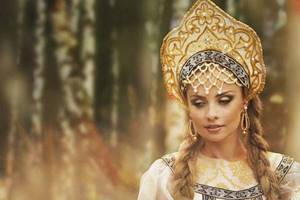
Haplogroup R1a1a is a genetic marker of the Russian people.
99% of R1a - belong to subclades from R1a1a1 (R1a-M417), which is divided into the following subclades:
R1a-L664 is essentially Northwestern Europe, found mainly in West Germany, the Benelux countries and the British Isles. R1a-Z645 accounts for the many R1a carriers found in areas from Central Europe to South Asia. R1a-Z283 is major in Central and Eastern Europe. R1a-Z284 is a Scandinavian subclade centered in Norway. Also found in areas colonized by the Norse Vikings , as well as parts of Scotland, England and Ireland. R1a-M458, primarily a Slavic subclade , with maximum frequencies in Poland, Czech Republic, Slovakia, but also quite common in southeastern Ukraine and northwestern Russia. its subclade R1a-L260 is a distinctly Slavic population in the West, peaking in frequency in Poland, the Czech Republic and Slovakia, and emitting at lower frequencies into East Germany, Eastern Austria, Slovenia and Hungary. R1a-Z280 is a Balto-Slavic marker found throughout central and eastern Europe (excluding the Balkans), from the western border running east to southwest Germany and into northeastern Italy (Veneto region). It can be divided into many clusters: East Slavic, Baltic, Pomeranian, Polish, Carpathian, East Alpine, Czechoslovakian, and so on. its subclade R1a-L365 is a Pomeranian cluster found also in southern Poland. R1a-Z93 is the major Asian clade of R1a in the white Asian population . Speakers of this subclade are found in Central Asia, South Asia and Southwest Asia (including among Ashkenazi Jews ). R1a-Z93 is a marker of historical peoples such as the Indo-Aryans, Persians, Medes, Mitanni (where the mysterious Nefertiti comes from) , and permeates the gene pool of Arabs and Jews. Linguist Trubachev sees an obvious repetition of the self-name of the Azov Indo-Aryan Meotians - the epigraphic MAITAI, in the name of the Hurrian-Aryan state in the north of Mesopotamia Mitanni, more precisely Maitanni (maita-“Meotians” + Hurrian formant -nni), and argues that the Azovian Meotians participated in the creation of the Mitannian statehood . its subclade R1a-M434 makes up a small percentage of the Pakistani population. Traces have also been found in Oman.
Russians are one of the most purebred peoples in Eurasia. Joint research by Russian and British geneticists put an end to the Russophobic myth that had been instilled in people’s minds for decades - they say, “scratch a Russian and you will definitely find a Tatar.” Now we can say: “If you scratch a European, you will find a Russian by blood!”
Russian genius deciphered Mayan writing
The fate of the children of Emperor Alexander ΙΙ
